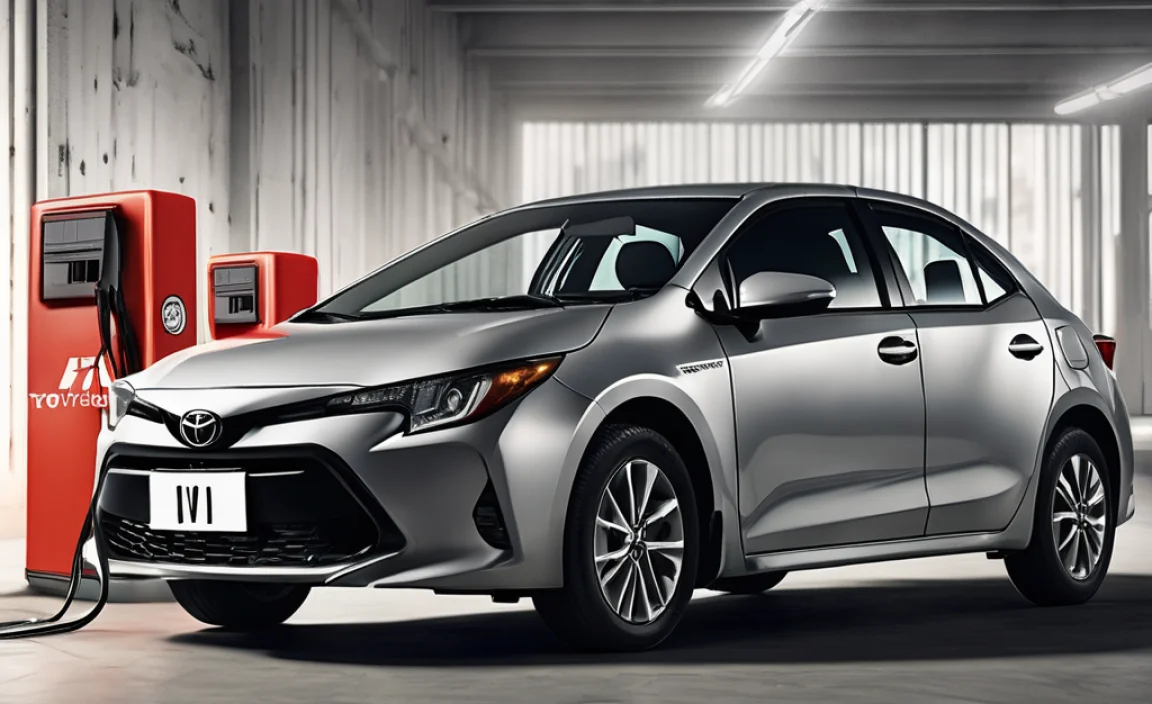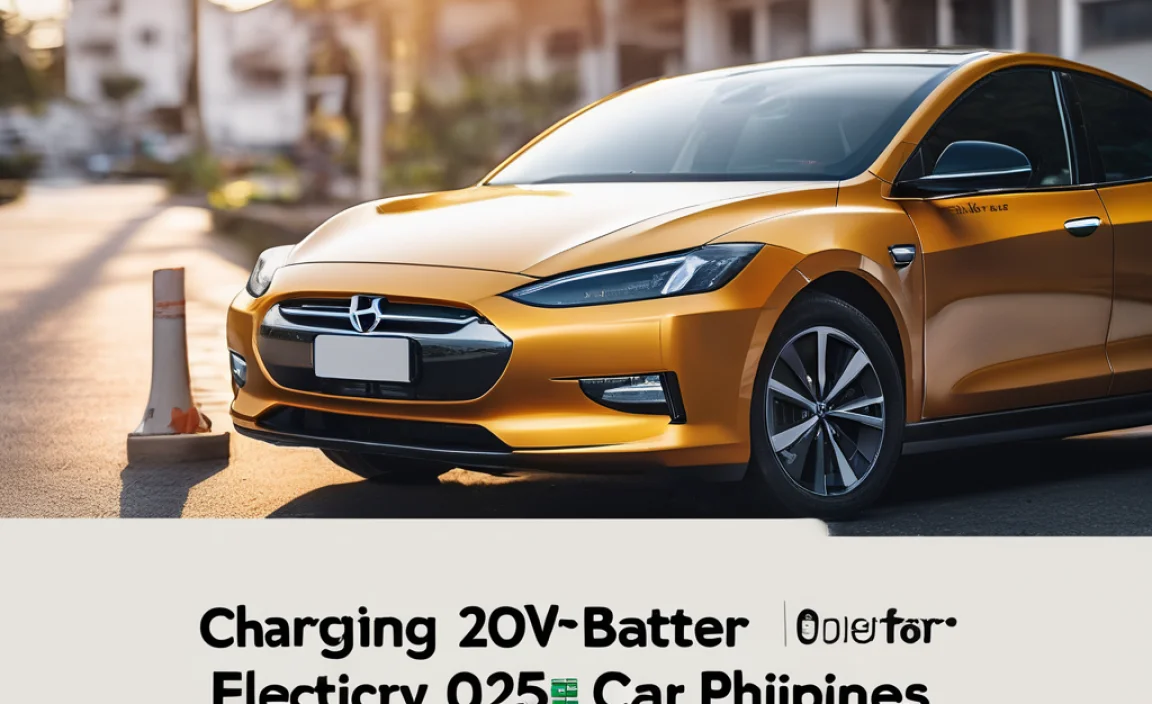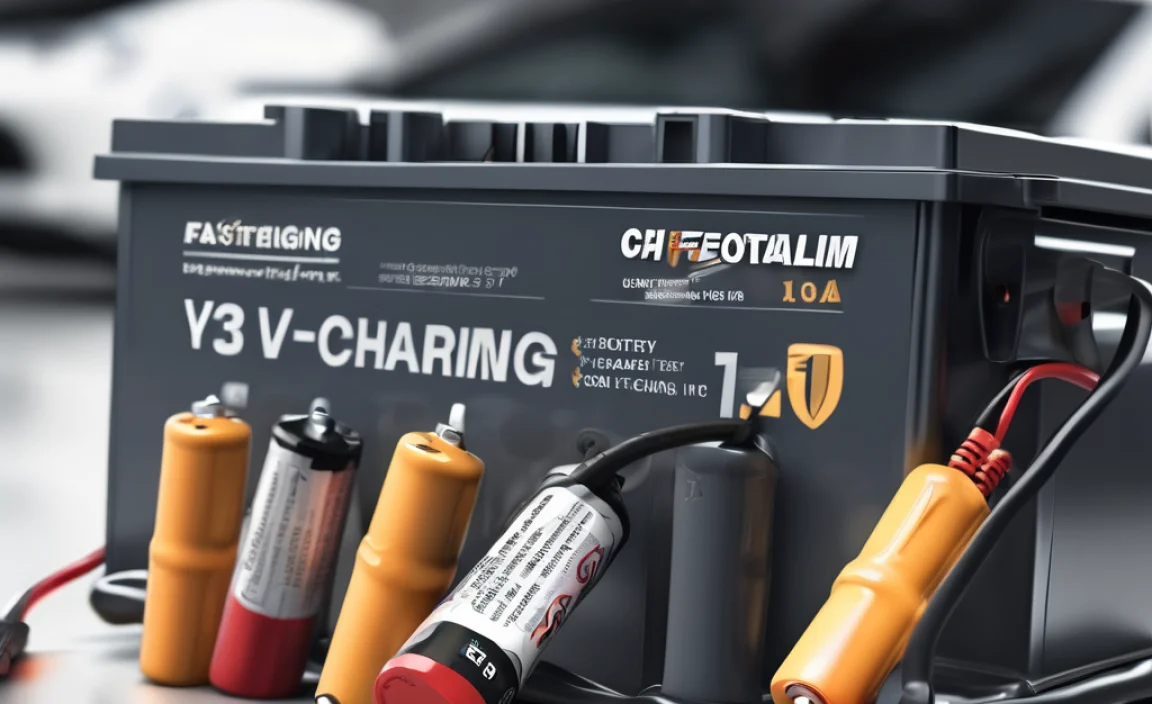Get the right Lightning adapter for your headphones to enjoy your music and calls on newer iPhones without hassle. This guide shows you what to look for, the different types available, and how to pick the best one for your needs without any confusion.
So, you just got a new iPhone, or maybe you love your trusty older model, but your favorite headphones don’t seem to plug in anymore? It’s a common thing these days, and it can be super frustrating when you just want to listen to your tunes or take a call. That little port on your iPhone might look different, and your old headphone jack just doesn’t fit. Don’t worry, this is where a Lightning adapter for headphones comes in! It’s a simple little tool that bridges the gap, letting your standard headphones work with your iPhone’s Lightning port. We’re going to walk through everything you need to know, step-by-step, so you can easily find the right adapter and get back to enjoying your audio.
Why You Might Need a Lightning to Headphone Jack Adapter
If you’re new to some Apple devices, you might be wondering why this adapter is even a thing. For a long time, smartphones had a standard 3.5mm headphone jack – that round little hole you’d plug your wired headphones into. Apple, however, decided to remove this port from newer iPhone models, starting with the iPhone 7.
Why did they do this? Well, Apple says it was to make devices thinner and to make room for other technology, like better speakers and the Taptic Engine. Plus, they’ve been pushing for wireless audio, like AirPods. But what if you have a fantastic pair of wired headphones that you love? Or what if you just prefer wired connections for their reliability and sound quality? That’s where the Lightning to 3.5mm headphone jack adapter becomes your best friend.
The Seamless Audio Solution: How it Works
A Lightning to 3.5mm headphone jack adapter is incredibly simple. It has a Lightning connector on one end that plugs directly into your iPhone’s charging port. On the other end, you have a standard 3.5mm female jack where your traditional wired headphones can plug in, just like they always did. It’s essentially a translator, converting the digital audio signal from your iPhone into a format your analog headphones can understand.
This adapter is a small but mighty piece of tech that keeps your favorite audio gear compatible with the latest devices. It’s a practical solution for anyone who isn’t ready to make the jump to wireless or wants to extend the life of their existing headphones.
Types of Lightning Adapters for Headphones
When you start looking for these adapters, you’ll notice there are a few different kinds. While they all do the same basic job, some offer extra features or are designed for specific situations. Understanding these differences will help you choose the one that fits your needs perfectly.
1. The Standard Apple Lightning to 3.5mm Headphone Jack Adapter
This is the official adapter made by Apple. It’s simple, reliable, and guaranteed to work with your iPhone. It features a Lightning plug on one end and a 3.5mm headphone jack on the other. It’s a straightforward plug-and-play solution.
Pros:
- Guaranteed compatibility with all Apple Lightning devices.
- Simple to use, no setup required.
- Apple quality and reliability.
- Supports audio playback and microphone input.
Cons:
- Can be a bit pricier than third-party options.
- Only serves one purpose – connecting headphones.
2. Third-Party Lightning to 3.5mm Headphone Jack Adapters
Many other companies make these adapters. Some are very similar to the Apple version, while others might have minor design differences or even slightly different features. When choosing a third-party adapter, it’s crucial to look for ones that are “Made for iPhone” (MFi) certified. This certification means the adapter has met Apple’s performance and safety standards, ensuring it will work correctly and won’t damage your device.
Pros:
- Often more affordable than the official Apple adapter.
- Wide variety of brands and designs to choose from.
- MFi certification ensures good performance and compatibility.
Cons:
- Not all third-party adapters are created equal; uncertified ones can cause issues.
- Compatibility might vary slightly with future iOS updates if not properly certified.
3. Lightning Adapters with Extra Ports (Dual Function)
These are a bit more advanced and very handy. Some adapters come with not just a 3.5mm headphone jack but also an additional Lightning port. This is fantastic because it allows you to listen to music with your wired headphones while simultaneously charging your iPhone. This “pass-through” charging feature is a lifesaver when you’re on a long trip or in a situation where you can only plug into one power source.
Pros:
- Allows you to listen to audio and charge your iPhone at the same time.
- Extremely useful for extended use or travel.
- Offers more functionality than a single-port adapter.
Cons:
- Usually more expensive than basic adapters.
- Can add a bit more bulk than a simple adapter.
- Need to ensure it supports audio and charging simultaneously (check product description).
4. Lightning Audio Splitters
These adapters allow you to plug in two sets of headphones into one Lightning port. They typically have a Lightning connector and then split into two 3.5mm headphone jacks. This is great for sharing music with a friend, watching a movie together on a plane, or if you want to connect both your headphones and a separate audio device.
Pros:
- Share your audio with another person easily.
- Useful for collaborative work or entertainment.
Cons:
- Can sometimes affect audio quality slightly compared to a direct connection.
- Adds more connectors, which can be a bit bulky.
- May not support microphone input for both connections simultaneously.
What to Look for When Buying a Lightning Adapter
Navigating the options can seem a little overwhelming at first, but by focusing on a few key things, you can make a smart choice. Think of it like selecting the right wrench for a specific job – you want the one that fits and performs best.
1. MFi Certification (Made for iPhone/iPad/iPod)
This is arguably the most important factor, especially for third-party adapters. MFi certification is a licensing program by Apple for developers of hardware and software for Apple’s devices. When an adapter is MFi certified, it means it has passed Apple’s rigorous testing for safety, durability, and compatibility. You’ll usually see the MFi logo on the product packaging or description.
Devices that are MFi certified are designed to work seamlessly with your iPhone and will continue to work with future iOS updates. Non-MFi certified accessories might work initially but can stop functioning after an iOS update, or worse, cause damage to your device. To avoid this headache, always look for the MFi badge!
2. Sound Quality
While most adapters should deliver good sound, some cheaper, uncertified options might introduce static, interference, or a noticeable drop in audio quality. If you’re an audiophile or simply appreciate clear sound, read reviews that specifically mention sound quality. For most casual listeners, any MFi-certified adapter will provide perfectly acceptable audio.
The adapter contains a small digital-to-analog converter (DAC) chip. Higher-quality DACs can lead to better sound. While it’s hard to tell the quality of the DAC just by looking, MFi certification usually implies a decent standard.
3. Durability and Build Quality
This adapter will likely be plugged and unplugged frequently. You want something that feels sturdy and can withstand daily wear and tear. Look at the materials used. Is the cable flexible but strong? Are the connectors well-built? A cheaper, flimsy adapter might break easily, leaving you without audio and potentially out of pocket for a replacement.
Pay attention to how the cable connects to the connectors. A reinforced stress-relief point where the cable meets the plug is a good sign of durability. Think about how you’ll use it – if you’re always on the go, a more robust build is essential.
4. Additional Features
As we discussed before, some adapters offer more than just an audio jack. Do you need to charge your phone while listening? Then look for an adapter with an extra Lightning port. Do you need to share your music? A splitter might be the way to go. Consider your primary use case to decide if these extra features are worth a potential increase in cost or bulk.
5. Price and Reviews
Price is always a factor. While you don’t need to buy the most expensive option, be wary of extremely cheap adapters, especially if they lack MFi certification. They might seem like a bargain but could lead to more problems down the line. Always check customer reviews. Real-world experiences from other users can provide invaluable insights into an adapter’s performance, durability, and any potential issues.
Choosing the Right Adapter for Your Needs
Let’s break down which adapter might be best for different scenarios. This can help you narrow down your choices based on how you plan to use it.
Scenario 1: The Everyday Listener
You primarily want to use your favorite wired earbuds or headphones with your iPhone for music, podcasts, or calls. You don’t necessarily need to charge at the same time.
Recommended:
The Official Apple Lightning to 3.5mm Headphone Jack Adapter.
A reputable MFi-certified third-party adapter.
These options are straightforward, reliable, and offer good sound quality without unnecessary complications.
Scenario 2: The Power User / Traveler
You often find yourself needing to listen for extended periods, perhaps on a commute, during a flight, or while working. This means you’ll likely need to charge your phone concurrently with listening to audio.
Recommended:
A Lightning to 3.5mm Headphone Jack Adapter with an additional Lightning charging port.
This type of adapter is a game-changer, ensuring your phone stays powered up while you enjoy your audio. Make sure to confirm it supports both listening and charging at the same time.
Scenario 3: The Music Sharer
You often want to share your audio with a friend or partner, perhaps while watching a video together or just listening to music. You don’t need charging capabilities simultaneously.
Recommended:
A Lightning Audio Splitter (with 3.5mm jacks for headphones).
This allows two sets of standard headphones to connect, making shared listening easy and convenient. Remember to check reviews for any potential impact on sound quality or mic functionality.
Scenario 4: The Budget-Conscious Buyer
You want a functional adapter that works well but are looking for the most cost-effective solution without compromising too much on quality.
Recommended:
* An MFi-certified adapter from a well-known, reputable third-party brand.
Look for brands that have a good track record for accessories. Compare prices and always check reviews to ensure you’re getting good value. Avoiding the absolute cheapest, unbranded options is key to avoiding future headaches.
How to Use Your Lightning Adapter
Using a Lightning adapter is as simple as it gets. There’s usually no setup or configuration required. Here’s a quick rundown:
- Plug the Adapter into Your iPhone: Take the Lightning end of the adapter and plug it firmly into the Lightning port on your iPhone. It should click into place nicely, just like your charger does.
- Plug Your Headphones into the Adapter: Now, take the standard 3.5mm plug from your wired headphones and insert it into the 3.5mm jack found on the other end of the adapter. Push it in until it feels snug.
- Play Your Audio: Open up your music app, podcast player, or whatever audio application you use. Start playing your content. The sound should automatically route through your connected headphones.
- For Adapters with Charging Ports: If you have a dual-function adapter, you can plug your iPhone’s charging cable into the extra Lightning port on the adapter. Your iPhone will then start charging while you listen.
It’s really that straightforward! Most of the time, your iPhone will recognize the adapter and headphones immediately, playing audio through them. If for some reason it doesn’t, try unplugging and replugging both the adapter and the headphones. Sometimes, a quick restart of your iPhone can also resolve minor hiccups. You can find more information on Apple’s support site regarding audio accessories if you encounter persistent issues. For instance, Apple provides guidance on using audio accessories with Lightning devices.
Troubleshooting Common Issues
While these adapters are generally reliable, you might occasionally run into a small snag. Here are a few common issues and how to fix them:
No Sound
Why it happens: The connection might be loose, the adapter might have an issue, or your iPhone might not be recognizing it properly.
How to fix:
- Make sure both the adapter and your headphones are plugged in all the way.
- Unplug and replug both the adapter into the iPhone and the headphones into the adapter.
- Restart your iPhone.
- Try a different pair of headphones to see if they work.
- Try the adapter with a different Lightning device (if available) to check if the adapter is the issue.
Static or Crackling Sound
Why it happens: This can be caused by a poor connection, interference, a faulty adapter, or even debris in the headphone jack or Lightning port. It’s particularly common with non-MFi certified adapters.
How to fix:
- Ensure your headphones are firmly plugged in.
- Clean the Lightning port on your iPhone and the 3.5mm jack on your headphones carefully. A can of compressed air or a dry, soft brush can help. Never use metal objects.
- If using a third-party adapter, try the official Apple adapter if possible, or a different MFi-certified adapter.
Microphone Not Working
Why it happens: Some adapters might not properly support the microphone input from your headphones, especially if they are designed for audio output only, or if the connection is faulty.
How to fix:
- Double-check that your headphones actually have a microphone.
- Ensure the headphone plug is fully inserted into the adapter’s jack.
- Verify that the adapter itself supports microphone input. Most MFi-certified adapters do, but it’s worth checking the product details.
- Test your headphones and microphone with another device or directly with a phone that still has a 3.5mm jack to confirm they are working.
Adapter Not Supported Message
Why it happens: This is almost always an indicator of a non-MFi certified adapter. Apple’s software detects that the accessory isn’t officially licensed.
How to fix:
- The best solution is to replace the non-MFi adapter with an official Apple one or a certified third-party MFi adapter.
- Occasionally, a software glitch might cause this. Try restarting your iPhone. If the message persists after trying another MFi adapter, there might be an issue with the iPhone’s Lightning port itself.
If you consistently face issues even with an MFi-certified adapter, consider contacting Apple Support or the manufacturer of the adapter. They can often provide further assistance or advise on replacements.
Are Lightning Adapters Safe for iPhones?
When you use an official Apple adapter or a reputable third-party adapter that is MFi certified, they are perfectly safe for your iPhone. These accessories are designed and tested to meet Apple’s standards. They deliver the correct power and data signals, ensuring they won’t harm your device’s battery or internal components.
The key phrase here is “MFi certified.” As mentioned before, this means the accessory has undergone rigorous testing by Apple and meets strict requirements for performance, safety, and compatibility. These adapters have built-in circuitry to manage the audio signal properly, and they won’t draw excessive power or cause any electrical issues.
The primary concern comes with generic, uncertified adapters that you might find for a very low price. These adapters often lack the proper safety mechanisms and quality control. They might:
- Cause unexpected shutdowns or glitches.
- Drain your iPhone’s battery faster than usual.
- Potentially damage the Lightning port or other internal components over time due to incorrect power delivery or signal interference.




